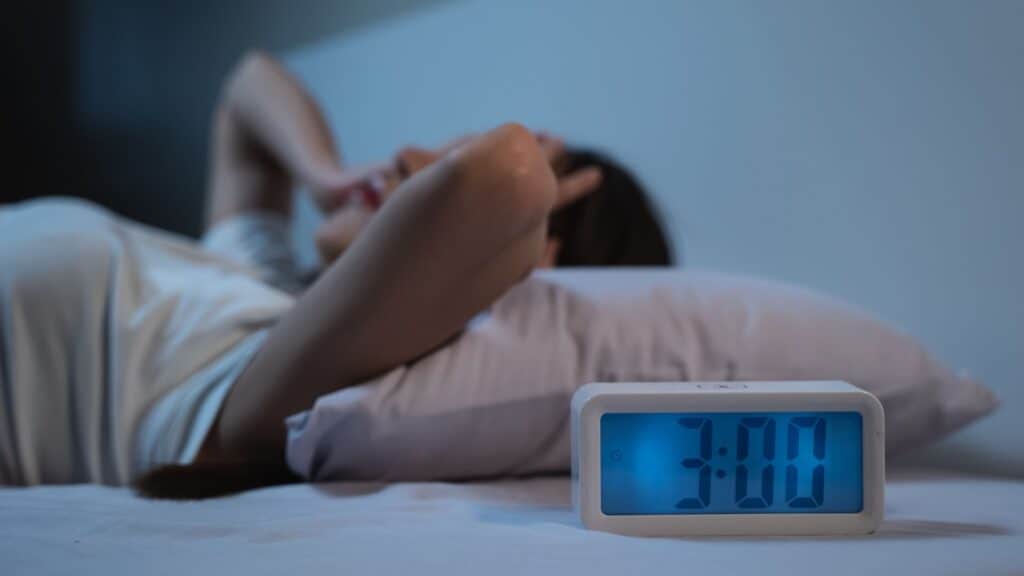Tired All the Time? Here’s How to Tell If You Have a Sleep Disorder!
Sleep is a fundamental pillar of health, as essential as proper nutrition and exercise. Yet, millions of people struggle with sleep-related issues that impact their daily lives, leading to fatigue, irritability, and long-term health problems. Among these issues, sleep apnea and narcolepsy are particularly concerning because they often go undiagnosed. But how can you tell if your sleep problems are more than just a rough patch and require medical intervention? Here’s what you need to know about identifying potential sleep disorders and when to seek help from a healthcare provider.
Recognizing the Signs of Sleep Disorders

Sleep disorders are more than just an occasional sleepless night. They are chronic conditions that can significantly impact your quality of life. Two common yet underdiagnosed sleep disorders are sleep apnea and narcolepsy.
Sleep Apnea

This condition is characterized by repeated interruptions in breathing during sleep. These interruptions can last for a few seconds to a minute and may occur multiple times throughout the night. The most common form, obstructive sleep apnea, occurs when the muscles in the throat relax excessively, blocking the airway.
Common Signs of Sleep Apnea:

- Loud snoring: While not everyone who snores has sleep apnea, loud and chronic snoring is a common symptom.
- Gasping or choking during sleep: This occurs when the airway is blocked, and the person briefly wakes up to resume breathing.
- Daytime fatigue: Despite getting a full night’s sleep, people with sleep apnea often feel excessively tired during the day.
- Morning headaches: Frequent morning headaches are a sign that your brain isn’t getting enough oxygen during sleep.
- Difficulty concentrating: The chronic fatigue associated with sleep apnea can lead to problems with memory, attention, and overall cognitive function.
Narcolepsy

Narcolepsy is a neurological disorder that affects the brain’s ability to regulate sleep-wake cycles. People with narcolepsy often experience excessive daytime sleepiness and may suddenly fall asleep during activities like working, eating, or even driving.
Key Symptoms of Narcolepsy

- Excessive daytime sleepiness: This is more than just feeling tired; it’s an overwhelming urge to sleep, often at inappropriate times.
- Cataplexy: This is a sudden loss of muscle tone, often triggered by strong emotions like laughter or surprise. Not all people with narcolepsy experience cataplexy, but it’s a hallmark symptom.
- Sleep paralysis: This occurs when you wake up but can’t move your body, often accompanied by hallucinations.
- Fragmented sleep: Despite being excessively sleepy during the day, people with narcolepsy often have trouble staying asleep at night.
When Does a Sleep Issue Become a Problem?

Occasional sleep disturbances are normal, especially during times of stress or after lifestyle changes like traveling or starting a new job. However, if sleep problems persist for more than a few weeks and start to interfere with your daily life, it’s time to consider seeking medical advice.
Don’t Ignore Sleeplessness

Chronic sleep issues should never be ignored. If you find that your sleep problems are affecting your mood, concentration, or overall health, it’s crucial to consult a doctor. Untreated sleep disorders like sleep apnea can lead to serious health issues, including high blood pressure, heart disease, and stroke.
Key Indicators That Your Sleep Issue May Be A Serious Problem

- Persistent difficulty falling or staying asleep: If you struggle to fall asleep or wake up frequently during the night and it’s impacting your daily functioning, this could be a sign of an underlying sleep disorder.
- Regular daytime fatigue or sleepiness: Feeling tired during the day despite getting what should be an adequate amount of sleep at night is a red flag.
- Behavioral changes: Mood swings, irritability, and difficulty concentrating can all be linked to chronic sleep deprivation.
- Snoring or breathing irregularities during sleep: If your partner complains about your snoring, or if you wake up gasping for air, these could be signs of sleep apnea.
The Importance of a Proper Diagnosis

Self-diagnosing a sleep disorder can be challenging. Many symptoms overlap with other health issues, and what feels like a minor inconvenience could be a sign of something more serious. This is why a proper medical evaluation is essential.
One of the biggest challenges with sleep disorders is that many people don’t realize they have them. Conditions like sleep apnea can be silent for years until they start causing more severe health problems. A sleep study can provide valuable insights and help guide treatment.
Get A Sleep Study

A sleep study, or polysomnography, is a comprehensive test that records your brain waves, oxygen levels, heart rate, and breathing during sleep. This test is often conducted overnight in a sleep clinic but can also be done at home with portable equipment. The results can help diagnose conditions like sleep apnea, narcolepsy, restless leg syndrome, and other sleep disorders.
When to See a Doctor

If you suspect you have a sleep disorder, the first step is to talk to your primary care physician. They can review your symptoms, medical history, and lifestyle factors that may contribute to your sleep problems. Based on this information, they may refer you to a sleep specialist for further evaluation.
Make That Appointment If…

- You or your partner notice significant snoring, gasping, or choking during sleep.
- You experience excessive daytime sleepiness, even after getting a full night’s sleep.
- You have difficulty staying awake during activities like driving or working.
- You’ve noticed changes in your mood, memory, or ability to concentrate.
Early Diagnosis Is Helpful

Early diagnosis and treatment of sleep disorders can significantly improve your quality of life. For example, continuous positive airway pressure (CPAP) therapy is highly effective in treating sleep apnea, while medications and lifestyle changes can help manage narcolepsy.
Conclusion

Sleep is vital to our well-being, and persistent sleep issues should never be ignored. Understanding the signs of sleep disorders like sleep apnea and narcolepsy is the first step toward seeking help. If you’re experiencing symptoms that affect your daily life, don’t hesitate to consult a doctor. A proper diagnosis and treatment plan can help you reclaim your sleep and overall health. Prioritize your sleep. It’s the foundation of good health, and without it, everything else suffers.
Science Tells Us What To Expect As We Age: Strategies For Thriving In Later Life

How does aging affect our bodies and minds, and how can we adapt to those differences? These are questions that pertain to us all. Aging gradually alters people over decades, a long period shaped by individuals’ economic and social circumstances, their behaviors, their neighborhoods, and other factors. Also, while people experience common physiological issues in later life, they don’t follow a well-charted, developmentally predetermined path. Let’s take a look at what science has told us to expect. Read: Science Tells Us What To Expect As We Age: Strategies For Thriving In Later Life
3 Simple Somatic Movements You Can Do To Calm Your Nervous System

Daily life can be unnerving. And it’s easy to go from calm to anxious or nervous in a flash. What’s harder is to go from anxious or nervous to calm.These simple movements that I am going to share here have been found to successfully move an individual from a state of anxious nervousness to a state of calm. Read: 3 Simple Somatic Movements You Can Do To Calm Your Nervous System
Join Us

Join us on this empowering journey as we explore, celebrate, and elevate “her story.” The Queen Zone is not just a platform; it’s a community where women from all walks of life can come together, share their experiences, and inspire one another. Welcome to a space where the female experience takes center stage. Sign up for our newsletter so you don’t miss a thing, Queen!







